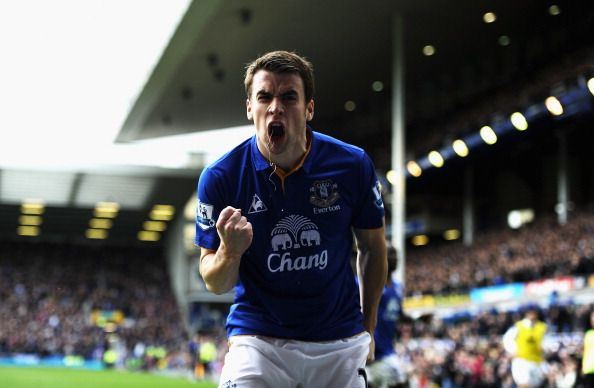
Everton: End of season review
Everton’s season started with a magnificent Marouane Fellaini-inspired victory over Man Utd and ended meaninglessly with defeat to Chelsea to confirm an unwanted sixth place and David Moyes’ exit.
A year that proved to be Moyes’ last offered some of the most genuine hope seen at Goodison for years, yet ultimately yielded routine feelings of frustration and hopelessness.
Ignoring the obvious blight on Everton’s season – the board – and talking only tactics, here are my top five positives and negatives from the Toffees’ season.
The positives
1. Right-sided Baines
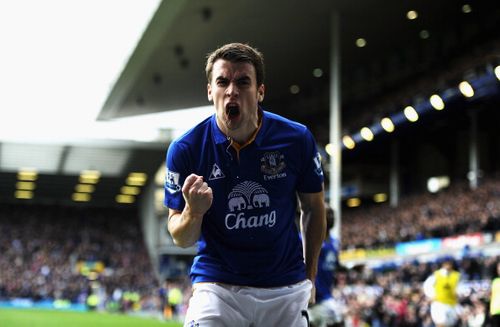
Seamus Coleman has been a revelation this season
They talk about ‘big years’ for youngsters. This was one for Seamus Coleman. After starting well but suffering a substantial injury, the Irishman returned with a Man of the Match display away at Norwich in February and has barely dropped his standards since.
Coleman’s improvement has been staggering, returning to his fearless, galloping best in the final third whilst developing his defensive determination and understanding in a manner that seemed beyond him.
Coleman perfectly complements Leighton Baines.
2. Is Gibson starting?
In his first full season at Goodison, Darron Gibson has become Everton’s most important player. Many Evertonians even wanted him to replace Phil Neville as captain. Deployed in a deeper role than he was at Man Utd, Gibson connects defence and midfield, midfield and attack, left and right. He holds everything together.
Whenever injury or tactical blunder removed Gibson from the starting line-up, as seen when Everton’s away game at West Brom, or the home game against Wigan, Everton fell to pieces.
Next season, he needs to shoot more often; but otherwise, an excellent year for the former United man.
3. Belgian Ronaldo
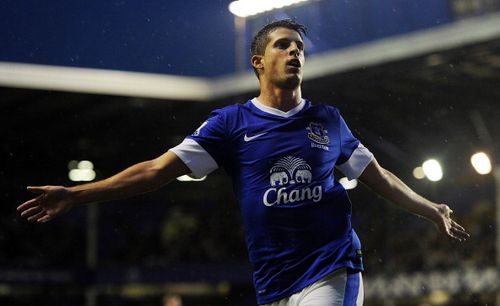
Kevin Mirallas – the difference between a chance and a goal
Kevin Mirallas’ debut season has been fantastic. It’s offered everything YouTube promised and more.
Mirallas’ sharp mind, quick feet and burst of acceleration has often been the difference between an attack and a goal-scoring opportunity. He is the first post-Arteta ‘worth the entrance money alone’ Everton player. Like Coleman, injury restricted Mirallas’ campaign, but he looked the business in nearly every appearance.
Free from injury, with an attacking manager and with more opportunity up front, Mirallas should score atleast 20 goals next season.
4. Brains and brawn
This season, Everton have played their best football in nearly 30 years. The Toffees were equally comfortable with either a powerful, direct approach which made use of both Victor Anichebe’s strength and Marouane Fellaini’s superb chest control to set up attacks, as seen against Manchester United, or the incisive, short passing which has spread from Pienaar and Baines to the rest of the team, and allowed Everton to retain possession for long periods, as they did against West Ham.
Both attacking strategies are backed up by relentless, collective pressing designed to close down space and retain the ball as quickly as possible, something Arsenal had great problems dealing with.
5. Tough to beat
Everton started the season on the back of a 9-game unbeaten run in the league and went only to lose only seven all year – the lowest season total under Moyes. The Toffees lost the fewest Premier League home games (one), which was in truth a healthy distraction from a sub-standard away record – winless since Newcastle on New Year’s Day.
But Everton did gain 22 points from losing positions, and in fairness, several of those were lost causes – Liverpool, Spurs and Aston Villa at home for example. What has been markedly different is the attitude after conceding.
Heads never dropped, the tempo always increased, quality improved, and more often than not, Everton drew level. This resilience has served the Toffees well.
The negatives
1. Too many draws
Everton drew 15 times this season. Whilst many points were earned from behind, eight were dropped in the last five minutes of games. Had Everton held on, they’d have been a point ahead of Arsenal after 37 games, which could have given them a very real chance to qualify for the Champions League.
Fulham away is one such game. Everton’s 15 shots on target to the Cottagers’ six meant nothing as Steve Sidwell’s 90th minute goal made it 2-2.
A lack of killer instinct – as also evidenced by the rarity of comfortable victories – has hampered Everton all season, which miserably leads on to…
2. Woeful Jelavic
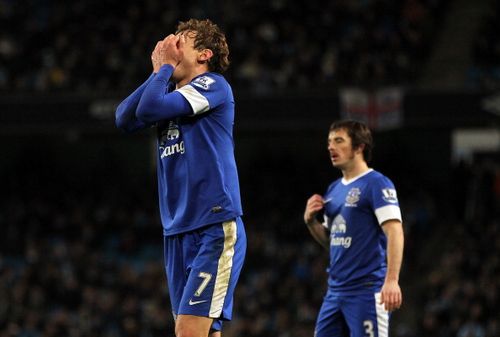
Nikica Jelavic would want to forget this season quickly
Nikica Jelavic cost Everton a place in the UCL. His finishing has been horrible to watch. There are factors to consider. Momentum from his first, second and third run is consistently halted by Everton’s slow, long-ball-to-Fellaini’s-chest tactics which barely ever feature a flick-on, plus striking is evidently Moyes’ weakest department.
Despite this, Jelavic has had enough chances to more than double his 8-goal haul, and with a more direct, offensively astute manager next season, this is his challenge to prove himself again.
3. Round peg, square hole
Moyes has a penchant for players out of position. Whilst necessity has forced his hand at times – like putting Steven Naismith out wide to cover Coleman/Mirallas – a fair few selections were counter-productive and unnecessary.
Phil Jagielka, Everton’s best defender, has played at right-back with Phil Neville in defensive midfield, whilst Fellaini, the league’s best defensive midfielder, was pushed forward into space created by opting to play Mirallas, the Greek Super League top-scoring striker, out wide.
Granted Fellaini’s been effective, but I’d back Mirallas’ goal-scoring ability over his any day, and the style of play that goes with it.
Play your best players in their best position.
4. Poor squad management
Moyes has made Everton’s small squad look much smaller by repeatedly selecting the same players. He has 11 first names on the team sheet, and no faith in fringe/youth players.
31-year-old Leon Osman regularly joined up with England for the first time, and yet started more Everton games than ever before – 42 compared to the 10 games that Ross Barkley, Thomas Hitzelsperger, Bryan Oviedo and Francisco Junior have started between them. Barring Santi Cazorla, Osman was the league’s most dribbled-past player – essentially second place in a fatigue contest.
Also, Tim Howard sits too comfortably at Goodison Park. Costly errors are too common. Giving Jan Mucha more chances would have forced Howard to up his game, as witnessed late – too late – in the season.
5. You’ll never win anything without kids
Despite reaching the U-21 Premier League semi-finals, Everton’s youngsters were overlooked all year. Promising talents like Shane Duffy, Apostollos Vellios and Conor McAleny actually had lesser appearances as compared to previous years. Work that one out. And that’s without mentioning Ross Barkley.
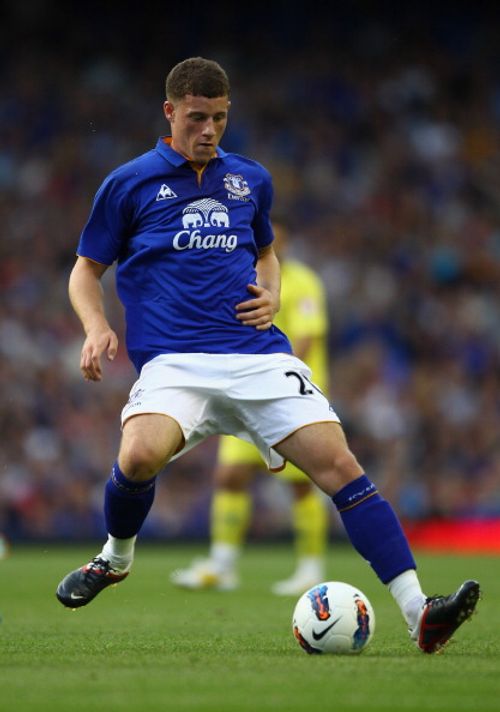
Ross Barkley
If he was good enough to start for Everton in 2011, and good enough to start two of 2013?s biggest games (Spurs and Arsenal away), he’s definitely good enough to have more than seven appearances this season, especially after two decent Championship loan spells.
Moyes’ departure will be to Barkley’s gain.